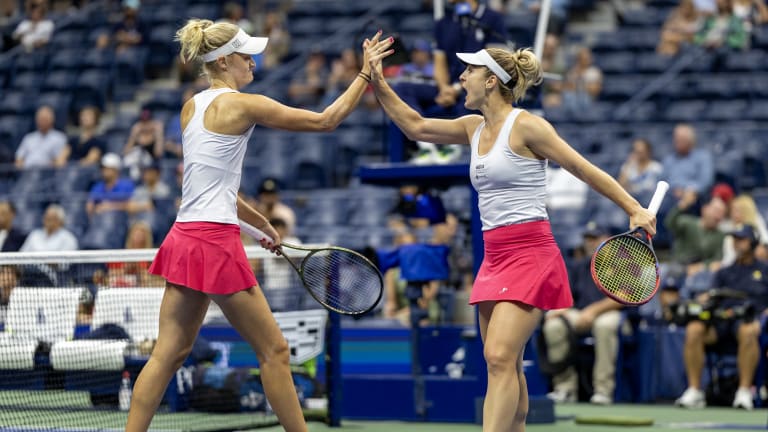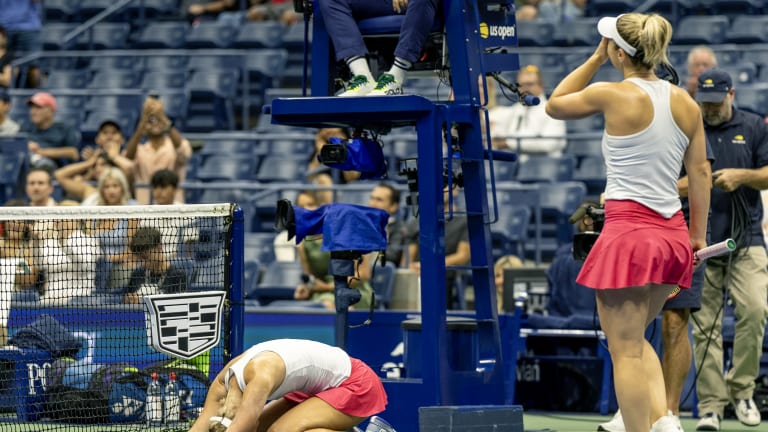WTA Finals
Erin Routliffe and Gabriela Dabrowski, unlikely US Open champions, continue their journey to Cancun
By Oct 26, 2023WTA Finals
How Coco Gauff pulled off a miracle marathon win over Zheng Qinwen in Riyadh
By Nov 09, 2024WTA Finals
Coco Gauff rallies against Zheng Qinwen for first WTA Finals title in Riyadh
By Nov 09, 2024WTA Finals
WTA Finals Preview: Coco Gauff, Zheng Qinwen face off for first year-end crown in Riyadh
By Nov 09, 2024WTA Finals
Coco Gauff solves Aryna Sabalenka for first final at WTA Finals, will face Zheng Qinwen for Riyadh title
By Nov 08, 2024WTA Finals
Zheng Qinwen holds off Barbora Krejcikova to reach WTA Finals final
By Nov 08, 2024WTA Finals
WTA Finals Preview: Aryna Sabalenka vs. Coco Gauff leads semifinal slate
By Nov 07, 2024WTA Finals
Defending champion Iga Swiatek eliminated from WTA Finals despite 2-1 record, win in last match
By Nov 07, 2024WTA Finals
Barbora Krejcikova surges into WTA Finals semis, defeats Coco Gauff, eliminates Iga Swiatek
By Nov 07, 2024WTA Finals
Into WTA Finals semifinals, Zheng Qinwen hopes to match Serena Williams' 2012 feat
By Nov 06, 2024WTA Finals
Erin Routliffe and Gabriela Dabrowski, unlikely US Open champions, continue their journey to Cancun
“This one is completely different because of the team we have around us,” Dabrowski says, “because of the work we’ve put in together.”
Published Oct 26, 2023
Advertising

A most unlikely set of circumstances saw Routliffe and Dabrowski paired at the US Open. They quickly flourished.
© Corbis via Getty Images
Advertising
Advertising

Sometimes, each player was eager to take over.
© Getty Images
Advertising
Advertising

Tennis Channel is Now Streaming
Stream every court live and on-demand, plus access to our 24/7 network.
Advertising

Neither Dabrowski or Routliffe could quite believe that their major debut ended with a major victory.
© Corbis via Getty Images
